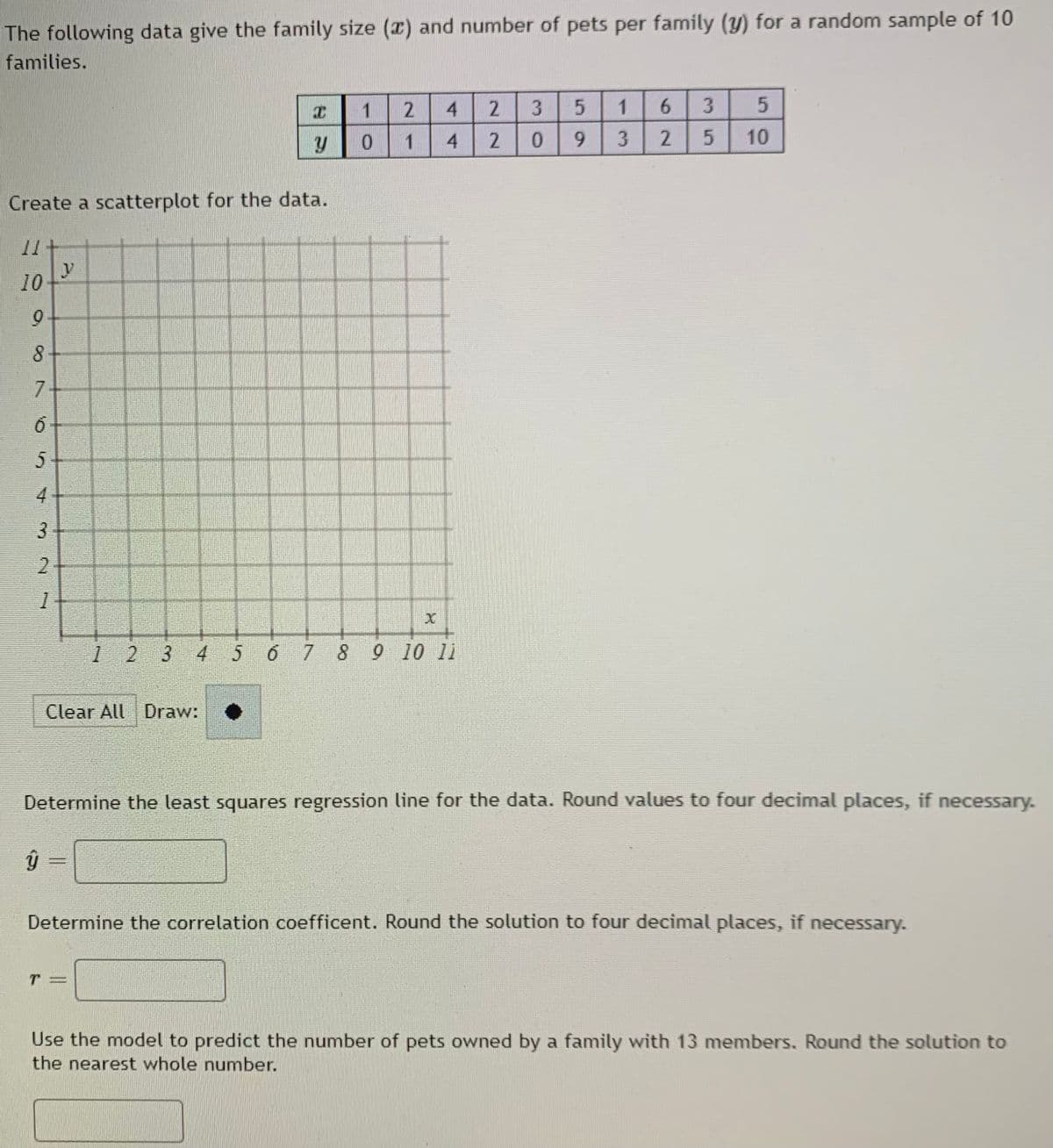e following data give the family size (x) and number of pets per family (9) för å Pa milies. 4. 4 0. 9. 3 10 eate a scatterplot for the data.
e following data give the family size (x) and number of pets per family (9) för å Pa milies. 4. 4 0. 9. 3 10 eate a scatterplot for the data.
Linear Algebra: A Modern Introduction
4th Edition
ISBN:9781285463247
Author:David Poole
Publisher:David Poole
Chapter7: Distance And Approximation
Section7.3: Least Squares Approximation
Problem 31EQ
Related questions
Question
100%

Transcribed Image Text:The following data give the family size (2) and number of pets per family (y) for a random sample of 10
families.
4.
2
6.
3.
0.
4.
9.
10
Create a scatterplot for the data.
y
10
6.
7-
4
1 2 3 4 5 6 7 8 9 10 11
Clear All Draw:
Determine the least squares regression line for the data. Round values to four decimal places, if necessary.
Determine the correlation coefficent. Round the solution to four decimal places, if necessary.
Use the model to predict the number of pets owned by a family with 13 members. Round the solution to
the nearest whole number.
5.
5.
2.
3.
3.
Expert Solution
This question has been solved!
Explore an expertly crafted, step-by-step solution for a thorough understanding of key concepts.
Step by step
Solved in 4 steps with 4 images

Recommended textbooks for you

Linear Algebra: A Modern Introduction
Algebra
ISBN:
9781285463247
Author:
David Poole
Publisher:
Cengage Learning

Glencoe Algebra 1, Student Edition, 9780079039897…
Algebra
ISBN:
9780079039897
Author:
Carter
Publisher:
McGraw Hill

Linear Algebra: A Modern Introduction
Algebra
ISBN:
9781285463247
Author:
David Poole
Publisher:
Cengage Learning

Glencoe Algebra 1, Student Edition, 9780079039897…
Algebra
ISBN:
9780079039897
Author:
Carter
Publisher:
McGraw Hill